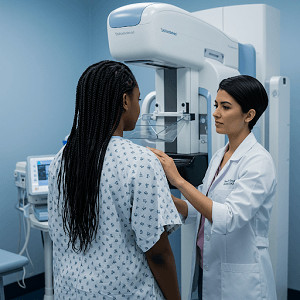The 2009 USPSTF breast screening guidelines have led to a significant decline in mammography uptake, particularly among minority communities. A study published in JAMA Network Open reveals that the updated recommendations, which advised biennial mammograms for women aged 50 to 74 and left the decision to women aged 40 to 49, resulted in a notable decrease in screening rates. This decline was most pronounced among non-Hispanic Black women, who experienced a 3 percentage-point drop in the probability of receiving a biennial mammogram.
Jason Semprini, PhD, from Des Moines University, emphasized the socioeconomic factors influencing how women respond to these national recommendations. The study, which analyzed data from 1.6 million women, found that the 2009 guidelines led to a 1.1 percentage-point decrease in mammography rates for women aged 40 to 49. For women aged 75 and older, the decrease was even more significant at 4.8 percentage points.
The impact on Black women is particularly concerning. The study highlights the heterogeneity in responses to the guidelines, with significant variations by race, ethnicity, and other factors. Semprini noted that the USPSTF likely did not anticipate such varied responses, underscoring the need for future guidance to consider differences in patient risk and how recommendations are communicated to the public.
See: “2009 USPSTF breast screening guidelines led to less mammography uptake” (February 5, 2025)


